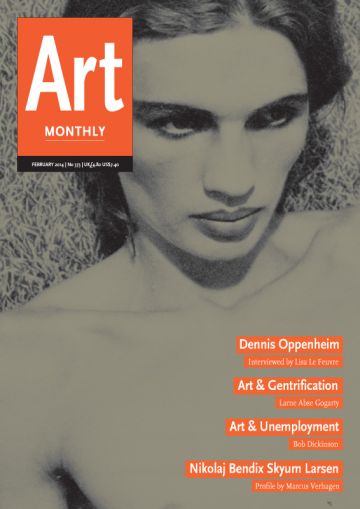Art Monthly 373
February 2014
Dennis Oppenheim
Interviewed by Lisa Le Feuvre
Art & Gentrification
Larne Abse Gogarty
Art & Unemployment 
Bob Dickinson
Nikolaj Bendix Skyum Larsen
Profile by Marcus Verhagen
Buy Now – select:
Want to read this right now?
Get instant access to the entire back catalogue via Exact Editions from only £8.99!
Contents
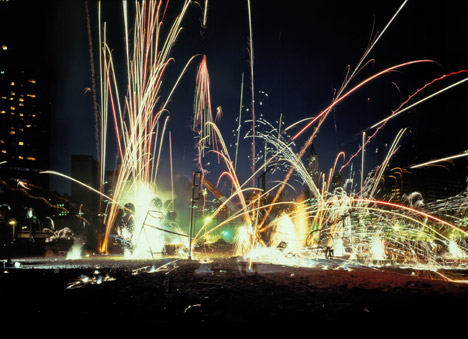
Dennis Oppenheim Formula Compound #1, A Combustion Chamber: An Exorcism from the 'Fireworks' series 1982 Battery Park, New York
Interview
Exorcisms
Dennis Oppenheim interviewed by Lisa Le Feuvre
Dennis Oppenheim was one of the pioneers of 1960s Land Art in the US, later moving into firework-based pieces and public sculpture. In this interview from before he died in 2011 he talks about the need to continuously extend one's practice, the perversity of working in the public realm and why he melted an amputee's false leg in 1970.
'These fireworks machines were physical counterparts to some sort of conceptual action, and the shooting of the fireworks became what I would call exorcisms – almost re-enacting a kind of cerebral mapping that was extricated through fire into visibility. They became more and more hazardous, more and more out of control.'
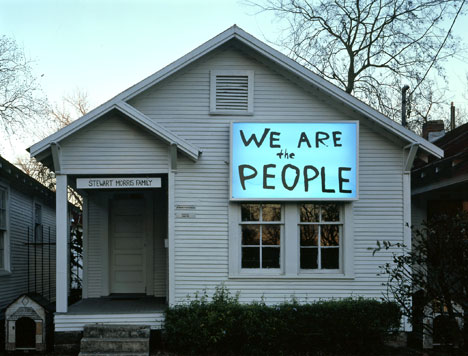
Sam Durant We Are the People 2003 installed at Project Row Houses
Feature
Art & Gentrification
Larne Abse Gogarty on the uses and abuses of social practice
The rise of socially engaged art would at first appear to counteract the neoliberal forces of the art market. But when one of its long-term practitioners, Rick Lowe, criticises its current star, Theaster Gates – whose self-proclaimed 'real-estate art' could be seen as a kind of feel-good money laundering system for the commercial art world – isn't it time to ask whether social practice is, at heart, critical or complicit?
'We need to recognise that the further retrenchment of state provision and deepening recession since 2008 have pushed frequently well-meaning socially engaged artists towards plugging the gap in providing social services where they risk endorsing the logic of austerity.'
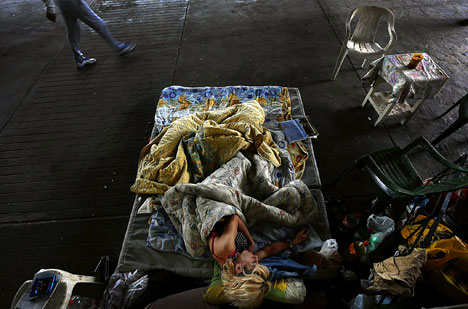
Yannis Behrakis 'Down and Out in Athens: Unemployed and Homeless in Greece' 2013
Feature
Gizza job!
Bob Dickinson on art and unemployment
The representation of the jobless in art shifted dramatically in the 20th century as industrialisation brought with it mass protests in public spaces against the conditions of the unemployed. But how have artists such as LaToya Ruby Frazier, Richard Shields and the Bite Back Movement portrayed the increasingly invisible unemployed of our current post-industrial world?
'In the post-industrial world so-called unemployment blackspots out of which the unemployed never seem to be able to escape, and into which artists find it difficult to fit, have replaced the public spaces through which the older, defunct icons of unemployment previously paraded or demonstrated.'
Comment
Editorial
Maybe It's Because I'm a Londoner
Now that the DCMS has launched an inquiry into the work of ACE, with a particular focus on ACE's supposedly London-centric funding decisions, isn't it time to point out the successful return on investment that the government has enjoyed from ACE?
'But all this is just playing the government's game of divide and rule. While it is arguable that Londoners pay a higher price for their perceived success in attracting visitors, the truth is that arts organisations throughout England have more than repaid the government for its investment. Rather than looking for ways to reduce London's arts subsidy, the government should be looking to invest more in both London and the regions.'
Artnotes
George Osborne cuts ACE's budget again; protests at the Serpentine Gallery highlight the paradoxes of public funding being used to chase private investment; Mike Nelson is accused of insensitive gentrification in Elephant and Castle; Northern Ireland's Turner Prize venue is at the centre of a culture versus business row; Tate Britain again plays unwitting host to inventive anti-BP protests; the latest news on galleries, events, appointments, prizes and more.
Submissions: Send news items to artnotes@artmonthly.co.uk
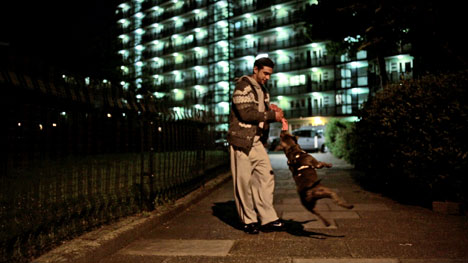
Nikolaj Bendix Skyum Larsen 343 Perspectives 2012
Profile
Nikolaj Bendix Skyum Larsen
Marcus Verhagen on the Danish video artist
Nikolaj Bendix Skyum Larsen, Paris-based but London-trained, works within a documentary tradition that allows his collaborators to tell their own nuanced stories of enforced cross-national living in a world of heavily policed borders.
'Larsen views the processes of globalisation through the eyes of men and women who have not benefited from them. In his documentary videos, he looks at locations that exist in the force fields of other, more prosperous places.'
Reviews
Exhibitions
Marcel Broodthaers – Décor: A Conquest and Bricks: 1966-1975
Michael Werner Gallery, London
Mark Prince
Transformer: Aspects of Travesty
Richard Saltoun, London
Morgan Quaintance
You Are The Company In Which You Keep
Northern Gallery for Contemporary Art, Sunderland
Sunderland Museum & Winter Gardens
George Vasey
Caroline May: The Killing Pictures
ONE National Gay and Lesbian Archives, Los Angeles
David Gleeson
Xu Bing: Travelling to the Wonderland
V&A, London
Stephanie Bailey
Salla Tykkä: The Palace
Baltic, Gateshead
Elinor Morgan
Agnes Denes: Work: 1967-2013
Firstsite, Colchester
Martin Herbert
North-west Round-up
Tate Liverpool • Castlefield Gallery • Untitled Gallery
Bob Dickinson
London Round-up 1
Chisenhale • Cubitt Gallery • Vilma Gold
Nick Warner
London Round-up 2
Domo Baal • Annely Juda • Tintype • St Clement's Hospital
Peter Suchin
Reviews
Performance
Performa 13
Rituals of the Rented Island
Kathy Battista on the current state of performance art in New York
'To see a performance at the Squat Theatre in downtown New York in the late 1970s one would either be personally invited or simply have stumbled upon its storefront on 23rd Street, where art and life mingled. Fast-forward 40 years to the New York of 2013: to attend the Performa 13 biennale one has to obtain a ticket via a strict RSVP policy, where capacity is tightly controlled and many of the performances take place at major institutions or theatres designed for live events.'
Reviews
Books
Marcel Broodthaers: Collected Writings
Deborah Schultz on the poet-turned-artist's letters
'In making reference to insincere objects, bad faith and guilty pleasure, Broodthaers presented himself as opportunistic, suggesting that his position as an artist existed as a response to the environment in which he found himself.'
Self-Organised
Andrew Hunt on artists doing it for themselves
'The book's editors have decided not to add to the plethora of literature that has transformed curatorial practice over the past decade and instead to focus on the practical task of arranging competing accounts around the corruption of ideas of independence, how the institution has been transformed by the non-institutional (and vice versa) and how self-determination operates by increasingly nebulous means, as well as searching for new critical forms of citizenship.'
Artlaw
Art After Death
The Death of an Artist
Henry Lydiate on the legal challenges following an artist's death
'Artistic legacies emerged as a theme in art news reports towards the end of 2013. For example, UK courts ruled that drawings sold as Francis Bacons were inauthentic, and US court documents revealed that 35 paintings seized by the Andy Warhol Estate from Warhol's off-site printer in 1991 because they were inauthentic were then sold as authentic in 2003. Let us consider typical issues involved in and arising from the death of an artist.'
Listings
Events
London Art Calendar
The updated London events calendar can also be viewed online.
Exhibitions
Exhibition Listings
Art Monthly's exhibition listings can also be viewed online.

